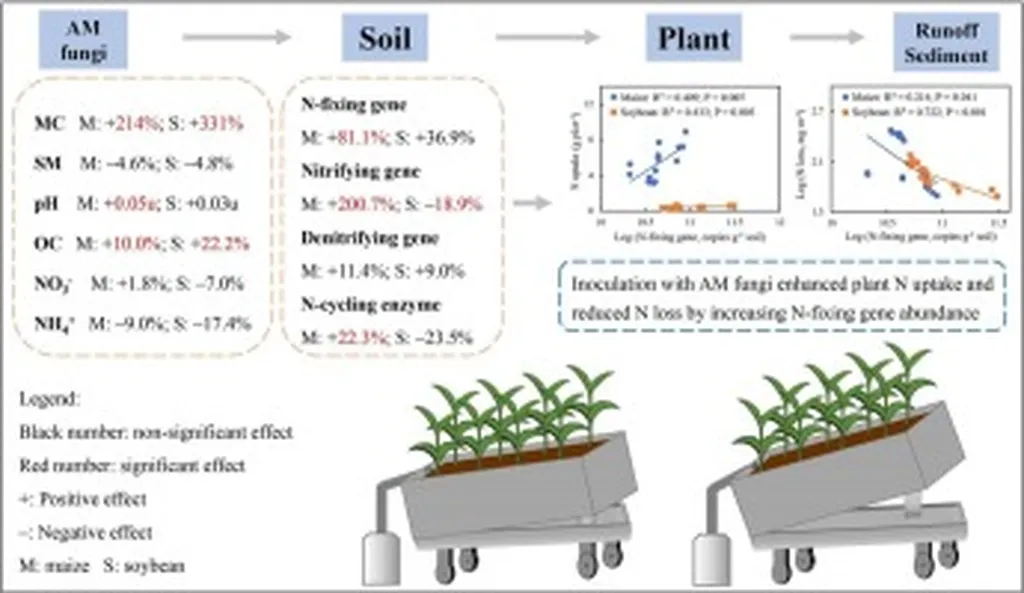In the quest to improve nitrogen use efficiency in agriculture, a groundbreaking study published in the journal *Applied and Environmental Microbiology* (translated from Chinese as “Applied and Environmental Microbiology”) sheds light on the pivotal role of arbuscular mycorrhizal (AM) fungi in mitigating nitrogen leaching. Led by Fei Wu from the College of Life Sciences at Northwest Normal University in Lanzhou, China, the research offers promising insights for the agricultural and energy sectors, where nitrogen fertilizers are crucial for productivity but often lead to significant environmental losses.
Nitrogen leaching is a major pathway for nitrogen loss, posing both economic and environmental challenges. While it is well-known that AM fungi enhance plant nitrogen uptake, the soil-based mechanisms behind this process have remained unclear until now. Wu’s study, conducted through a meticulous pot experiment, explored how AM fungi influence nitrogen leaching, soil structure, and nitrogen retention in Camellia oleifera soils.
The experiment involved varying nitrogen levels and AM fungal inoculation treatments, evaluating key parameters such as plant nitrogen uptake, hyphal length density, glomalin-related soil protein (GRSP) content, soil aggregation, and nitrogen leaching loss. The results were striking: under high nitrogen conditions, AM fungi reduced ammonium nitrogen (NH4+-N) and total nitrogen (TN) in leachate by up to 44.96% and 24.70%, respectively. “This significant reduction in nitrogen leaching highlights the potential of AM fungi to improve nitrogen use efficiency and reduce environmental pollution,” Wu explained.
The study also revealed that AM fungi increased soil GRSP content, nitrate nitrogen (NO3−-N), and total nitrogen, while reducing dissolved total nitrogen (DTN) and altering soil aggregate distribution. “The changes in soil structure, particularly the promotion of aggregate formation through GRSP secretion, play a crucial role in reducing nutrient loss,” Wu noted. This finding underscores the dual role of AM fungi in both enhancing plant nutrient uptake and improving soil health.
The implications of this research are far-reaching. For the agricultural sector, the use of AM fungi could lead to more sustainable farming practices by reducing the need for excessive nitrogen fertilizers and minimizing environmental impact. In the energy sector, where nitrogen fertilizers are essential for biofuel crop production, this research could pave the way for more efficient and eco-friendly practices.
As Wu’s study demonstrates, the functional significance of AM fungi extends beyond their interactions with plant components to include their role in soil amelioration. This holistic understanding could shape future developments in agriculture and energy production, promoting sustainability and efficiency. The findings published in *Applied and Environmental Microbiology* not only advance our scientific knowledge but also offer practical solutions for real-world challenges, making this research a beacon of hope for a more sustainable future.

